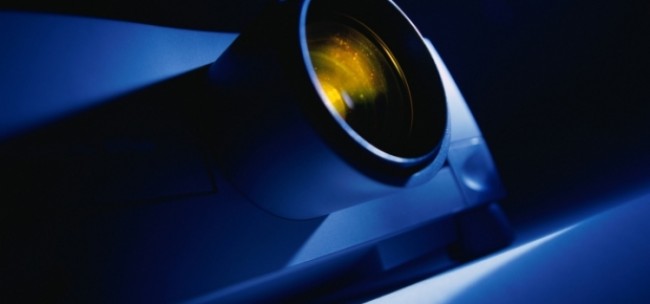Samsung heads into CES 2026 with momentum Samsung Electronics is closing out 2025 with a strong signal of where its future tech ambitions lie….
6 things to consider before buying a projector

So the boss stopped by your cubicle and told you to stop sharpening pencils and do some research on data projectors. Like what they are all about and how much they cost. And you had better have the info on his desk by the close of work today. Don’t panic Slim. Help is at hand.
The boss probably confused you to start off with by calling the projector by its code name: Proxima. Truth is, what he means is a data video projector, but Proxima is to projectors what Hoover is to vacuum cleaners. Just goes to show the power of branding. Ok, so it’s a data video projector that you’re after, so let’s get going.
Big name is bad
I would strongly suggest that if you are in the market, you discard adverts for projectors that you see in large department stores. There are a couple of good reasons for this, not the least of which is the information in the advert. I’ve seen quite a few department store adverts for projectors that fail to mention the brightness of the machine. That’s pretty disconcerting, seeing as it’s one of the most important features. A second good reason for going the specialist route is the slightly vague stare you will probably get from the assistant in the department store when you ask him to explain or demonstrate the main features of the projector. He may know a little bit, but he is far from being an expert
Start your search by getting quotes from specialist audio-visual companies. Look in your local telephone directory or Google under “audio-visual” and you’ll come up with some reputable names.
A demonstration is needed
A crucial service offered by the specialist audio-visual company is that they will hear what your requirements are and then make suggestions. Most importantly, they will also come out to your offices and demonstrate the projector in your own environment. This will allow you to see a potential purchase in operation and give you an idea of image, brightness in ambient light conditions and size of the unit.
Frills are no fun
Avoid features such as motorized zoom and focus functions. These are fun to have, but completely unnecessary and don’t do anything that you can’t do by hand. They just add complication to the projector and should something go wrong with either of these features, the commensurate repair cost will be higher
Budget aside, there are four main things to look out for. They are resolution, ANSI lumens (brightness), weight and warranty.
It’s all about the resolution
Let’s start with resolution. Bear in mind that a projector is pretty much a glorified monitor. It apes what it is fed and the projector market has traditionally followed the pc market in resolution. If you are buying a projector, it will need to support laptop resolutions of 1024 x 768 to what is currently the most popular of resolution which is 1366 x 768. Again, get the person selling you the projector to do a demonstration using various resolution settings on the laptop. The proof is in what the image will look like and if you start getting screen compression or you lose fonts, you need to re look at the resolution you require.
Brighter is better
Once you’ve dealt with the resolution, see what you need with respect to brightness. Ideally, you should look at your worst case scenario in which you have no control over ambient light in your presentation venue. It is a no brainer that the brighter the projector the better. But you will also pay more for a brighter projector and if you can get away with lower lumens, so much the better, as it will cost you less. Again, get the sales person or projector consultant to demonstrate this to you, at your offices. Remember too, that most projectors have a menu function which allows you to control the lamp settings. This means that if you are able to darken your presentation venue slightly, you can drop the lumen setting on the lamp. This is very often referred to as “whisper mode” and extends the life of your lamp, which will save you money in the long run.
Odds and ends
So, tick the resolution and brightness boxes. How about the weight of the machine and how critical is it? Well, if the projector is going to be mounted to a bracket protruding from the ceiling in the boardroom, then the weight doesn’t really matter. Having said this, most “boardroom” style projectors that knock out a decent amount of light, probably weigh in between 2.5kg’s and 3.0 kgs. This is not heavy and in fact could act as a portable projector if necessary.
So by now you know that you should be buying your projector from an audio visual specialist, rather than a department store. You understand the importance of resolution, brightness and weight, so what’s left? Warranty’s what’s left, that’s what. And it is worth considering because repairs to projectors can be expensive. Realistically, in the data projector market and across almost all the brands, there are no lemons. You may get the odd “Monday machine” that has a manufacturing fault, but that would be covered by the manufacturer’s warranty. Of crucial importance is the 3 year warranty and the suppliers agreement to loan you a machine whilst yours is in for repairs. You won’t get that with a 1 year warranty and it’s worth gold. It means you will never be without a projector, even if the supplier only lends you a machine for the days that you are doing presentations
That pretty much covers the critical issues that you need to look out for. Best of luck.


